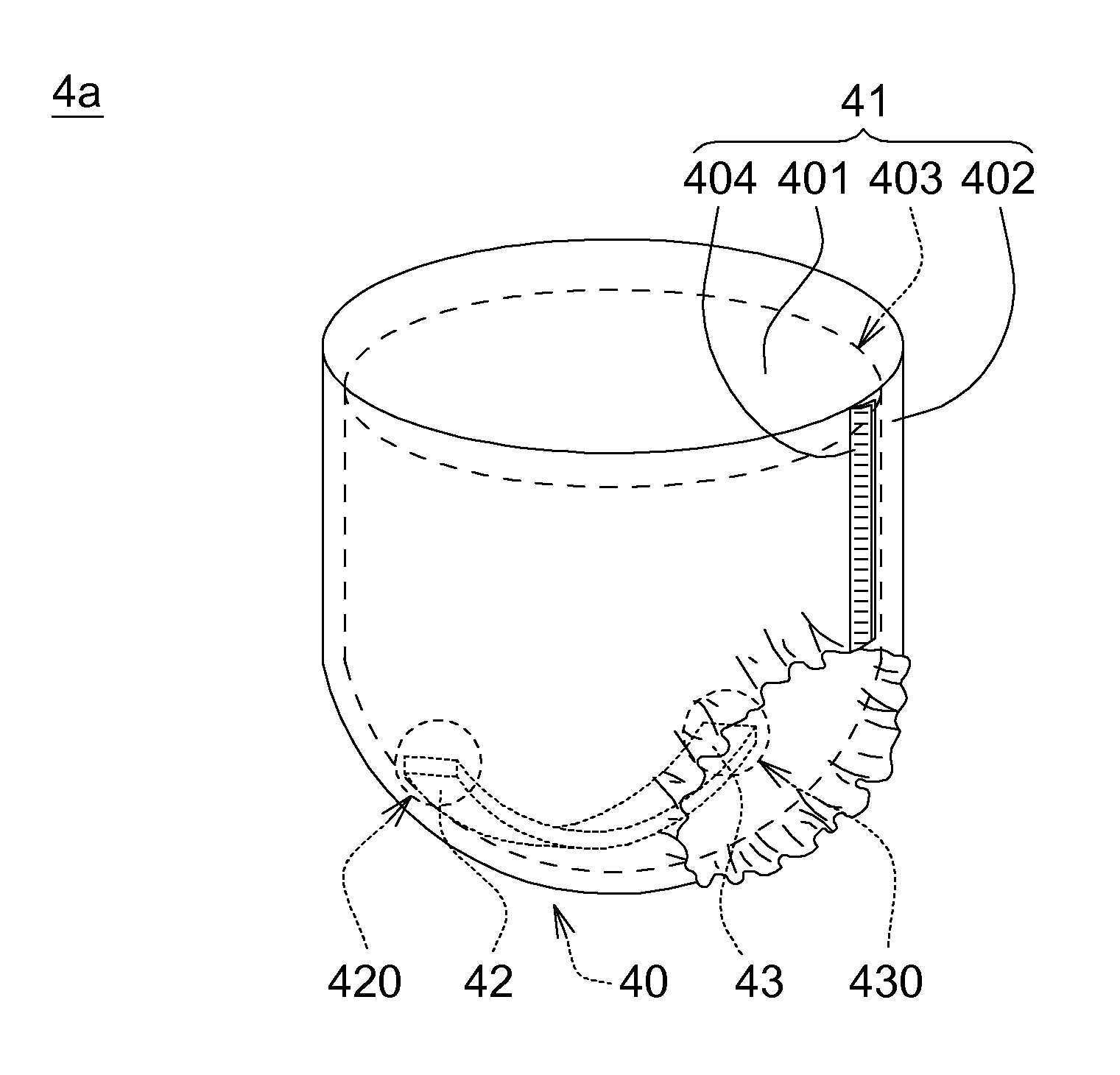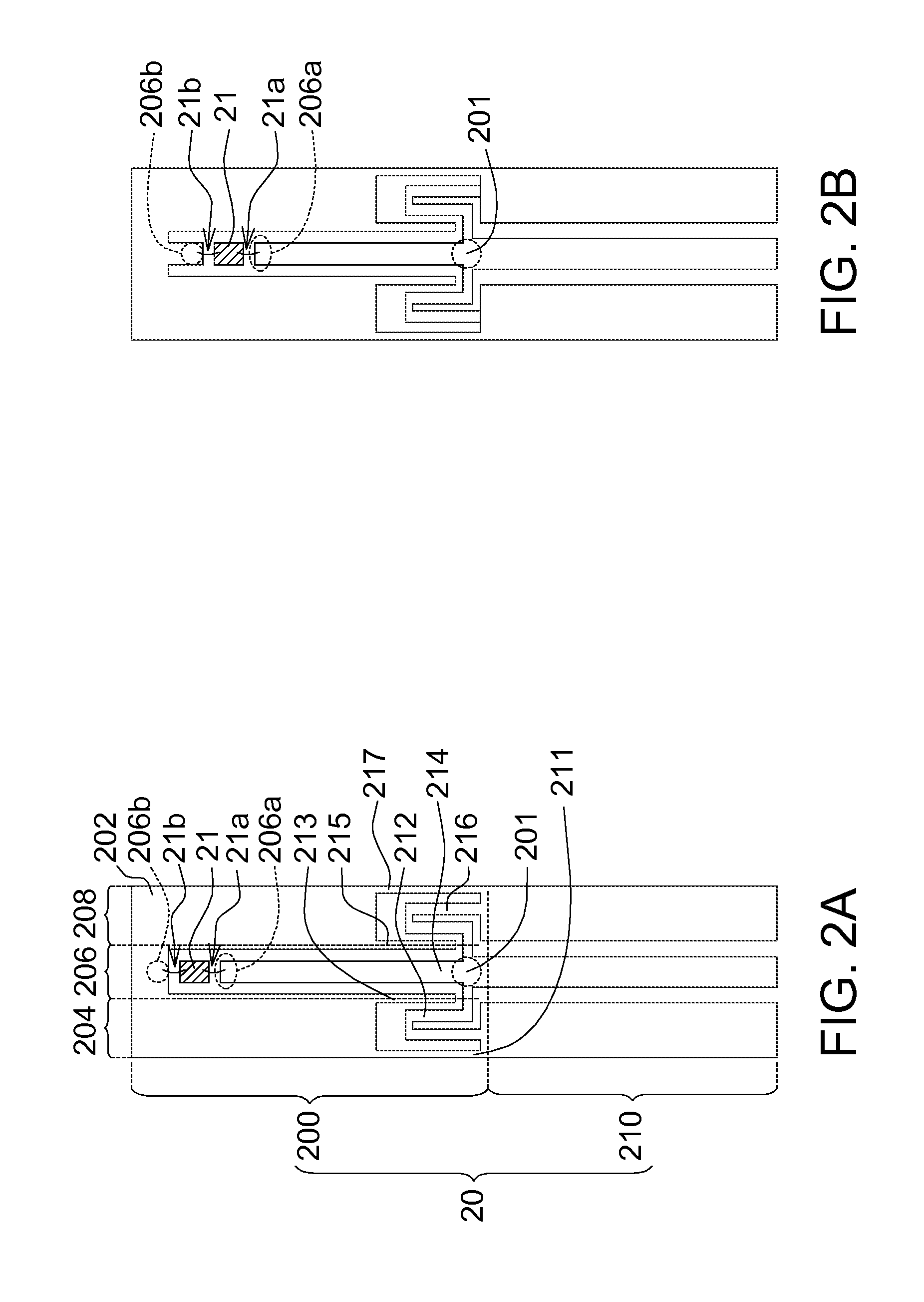Radio frequency identification tag and diaper, absorber and sensing system using the same
a radio frequency identification and diaper technology, applied in the field of diapers, absorbers and sensing systems, can solve the problems of ineffective manual check-up, increased risk of urinary tract infection, and inconvenient use for users
- Summary
- Abstract
- Description
- Claims
- Application Information
AI Technical Summary
Benefits of technology
Problems solved by technology
Method used
Image
Examples
first embodiment
[0025]Referring to FIGS. 1A and 1B, schematic diagrams of coplanar waveguide structures according to an embodiment of the disclosure are shown. The coplanar waveguide structure 10 includes an impedance match portion 100 and a transmission portion 110. The impedance match portion 100 has an input end 101 and a ground plane 102. The impedance of the input end 101 matches the input impedance of the transmission portion 110. The interior of the impedance match portion 100 at least includes three neighboring transmission lines, namely, a first shorted transmission line 104, an RF signal transmission line 106 and a second shorted transmission line 108 arranged from left to right in sequence. The three neighboring transmission lines are respectively formed by a plurality of neighboring metal conductors, namely, a first ground conductor 111, a first signal conductor 112, a second ground conductor 113, a second signal conductor 114, a third ground conductor 115, a third signal conductor 116 ...
second embodiment
[0029]Referring to FIGS. 2A and 2B, schematic diagrams of coplanar waveguide structure 20 according to an embodiment of the disclosure are shown. The coplanar waveguide structure 20 includes an impedance match portion 200 and a transmission portion 210. The differences between the impedance match portion 200 of the present embodiment and the impedance match portion 100 of the first embodiment are as follows. In the present embodiment, the first signal conductor 212 and the third signal conductor 216 are extended in an S shape instead of a long strip. The ground plane 202, extended to two opposite sides of the second signal conductor 214, is coupled to the first ground conductor 211, the second ground conductor 213, the third ground conductor 215, and the fourth ground conductor 217 respectively to from a common ground plane. The first signal conductor 212 is coupled between the input end 201 and the first ground conductor 211. The first signal conductor 212 and its neighboring groun...
application example
[0038]Referring to FIGS. 4A-4B and 5A-5B. FIGS. 4A-4B respectively are schematic diagrams of wetness sensing diapers according to an application example of the disclosure. FIGS. 5A-5B respectively are schematic diagrams of wetness sensing absorbers according to another application example of the disclosure. In each application example, any of the RF identification tags 3a-3c illustrated in FIGS. 3A-3C may be used in the urine wetness sensing diapers 4a-4b or the wetness sensing absorbers 5a-5b. The designations inside and outside a parentheses are used for different application examples. The body 41 of the wetness sensing diapers 4a-4b and the body 51 of the wetness sensing absorbers 5a-5b respectively include an inner layer 401 (501), an outer layer 402 (502) and an absorber 403 (503). The inner layer 401 (501) is liquid permeable to keep the surface dry and cozy. The outer layer 402 (502) is liquid impermeable and is formed by such as a water-proof PE film such blocks the leakage ...
PUM
 Login to View More
Login to View More Abstract
Description
Claims
Application Information
 Login to View More
Login to View More - R&D
- Intellectual Property
- Life Sciences
- Materials
- Tech Scout
- Unparalleled Data Quality
- Higher Quality Content
- 60% Fewer Hallucinations
Browse by: Latest US Patents, China's latest patents, Technical Efficacy Thesaurus, Application Domain, Technology Topic, Popular Technical Reports.
© 2025 PatSnap. All rights reserved.Legal|Privacy policy|Modern Slavery Act Transparency Statement|Sitemap|About US| Contact US: help@patsnap.com



